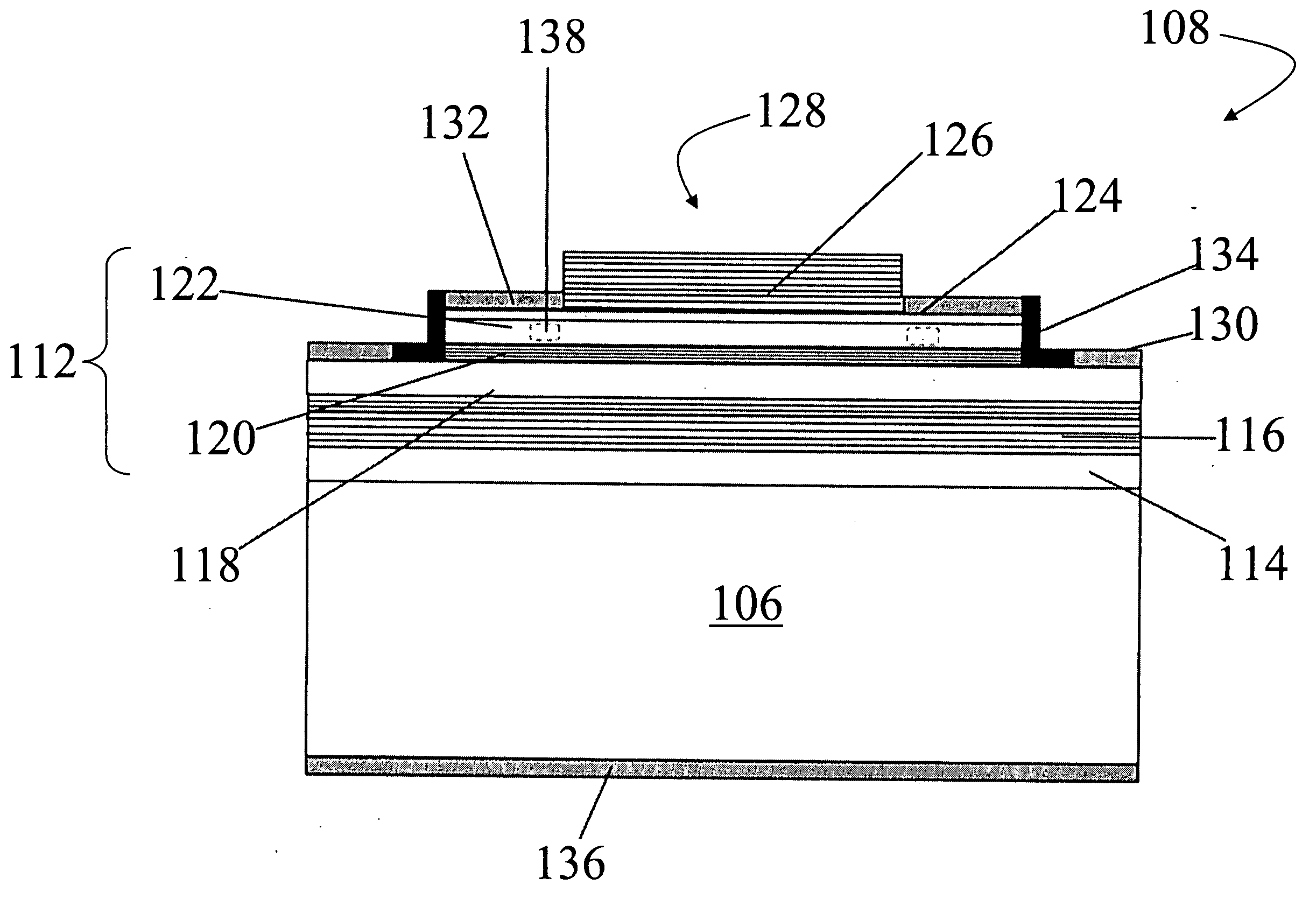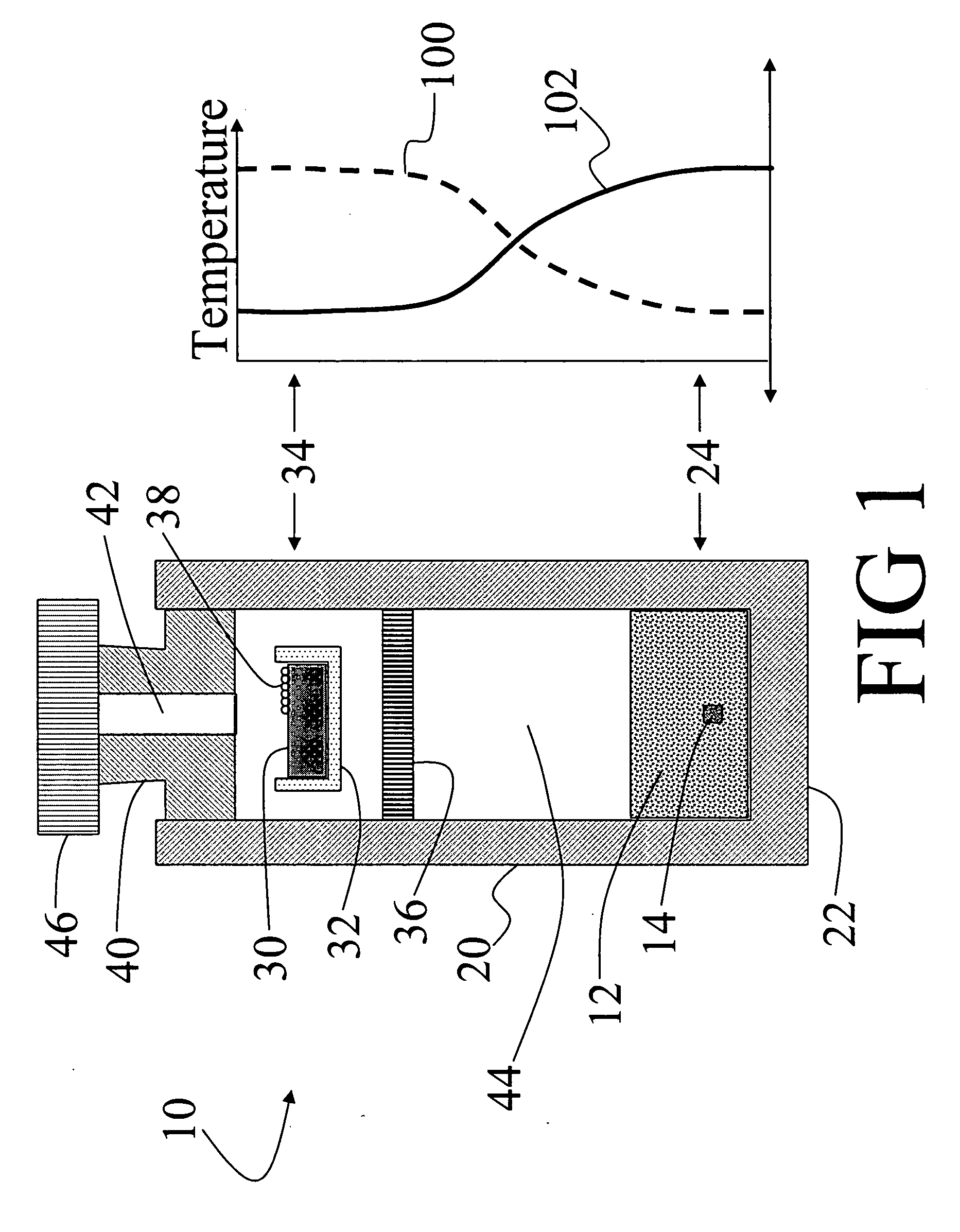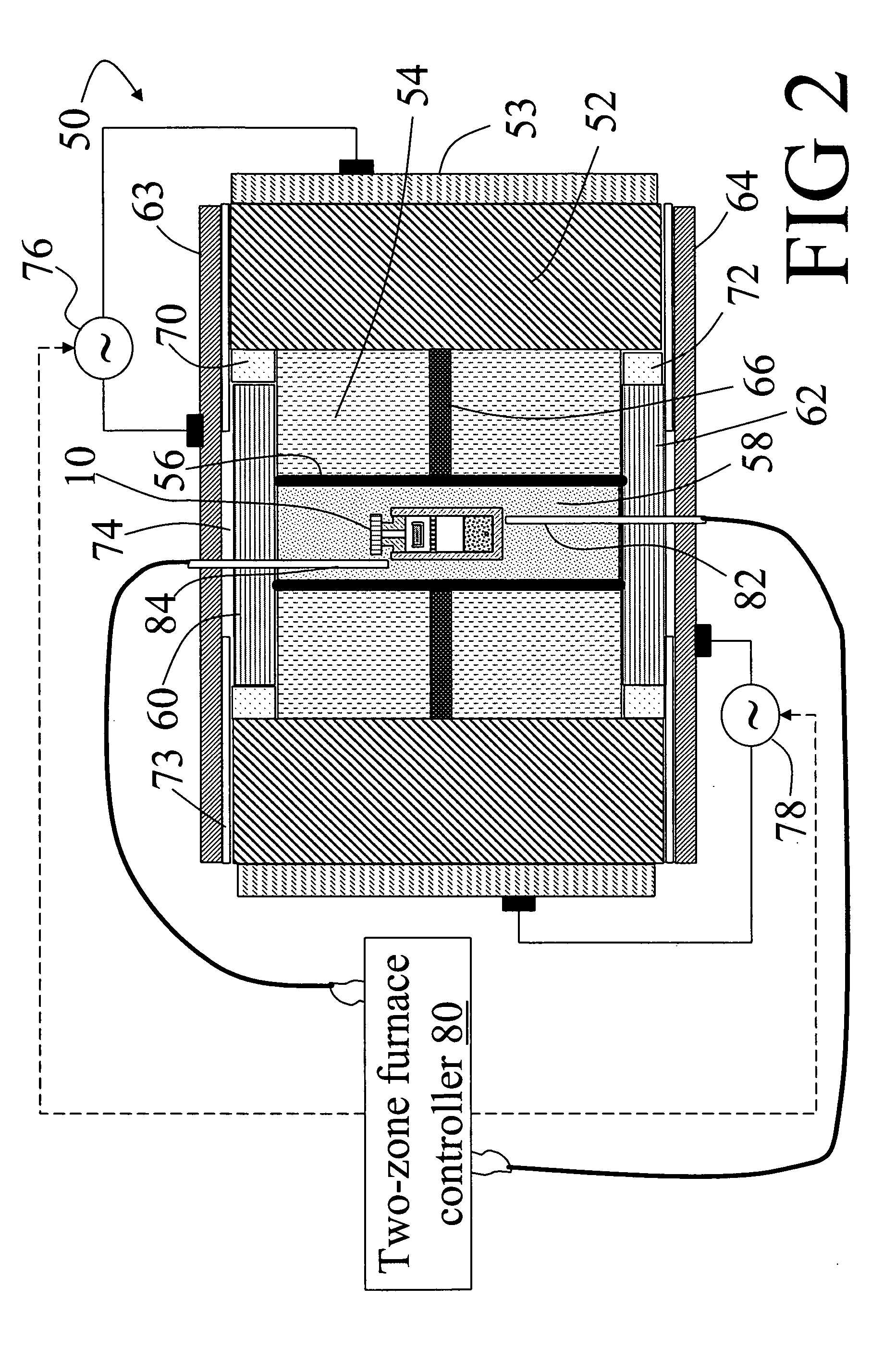Group III-nitride based resonant cavity light emitting devices fabricated on single crystal gallium nitride substrates
a gallium nitride and resonant cavity technology, applied in the field of lighting arts, can solve problems such as difficult to fabricate reliable resonant cavity devices, loss of efficiency by stokes shift, reflective or light-scattering loss, and device failures associated with phosphor packaging, and achieve the problem of large volume and high-quality gallium nitride boule growth
- Summary
- Abstract
- Description
- Claims
- Application Information
AI Technical Summary
Benefits of technology
Problems solved by technology
Method used
Image
Examples
Embodiment Construction
[0036] With reference to FIG. 1, a cell or capsule 10 is used in growing a three-dimensional gallium nitride boule 12 from a gallium nitride seed 14 using a recrystallization technique performed in a nitrogen-containing superheated fluid. The capsule 10 includes a main container 20 which is preferably generally cylindrical in shape with a diameter of about one inch or larger, although containers having other shapes and sizes are also contemplated. The container 20 includes a sealed bottom section 22, which is preferably integrally formed with the main container 20, although a separately formed bottom section that is welded or otherwise secured to the main container is also contemplated.
[0037] The container 20 including the bottom section 22 is preferably formed of at least one of copper, a copper-based alloy, gold, silver, palladium, platinum, iridium, ruthenium, rhodium, osmium, titanium, vanadium, chromium, iron, an iron-based alloy, nickel, a nickel-based alloy, zirconium, niobi...
PUM
| Property | Measurement | Unit |
|---|---|---|
| optical absorption coefficient | aaaaa | aaaaa |
| optical absorption coefficients | aaaaa | aaaaa |
| thickness | aaaaa | aaaaa |
Abstract
Description
Claims
Application Information
 Login to View More
Login to View More - R&D
- Intellectual Property
- Life Sciences
- Materials
- Tech Scout
- Unparalleled Data Quality
- Higher Quality Content
- 60% Fewer Hallucinations
Browse by: Latest US Patents, China's latest patents, Technical Efficacy Thesaurus, Application Domain, Technology Topic, Popular Technical Reports.
© 2025 PatSnap. All rights reserved.Legal|Privacy policy|Modern Slavery Act Transparency Statement|Sitemap|About US| Contact US: help@patsnap.com



